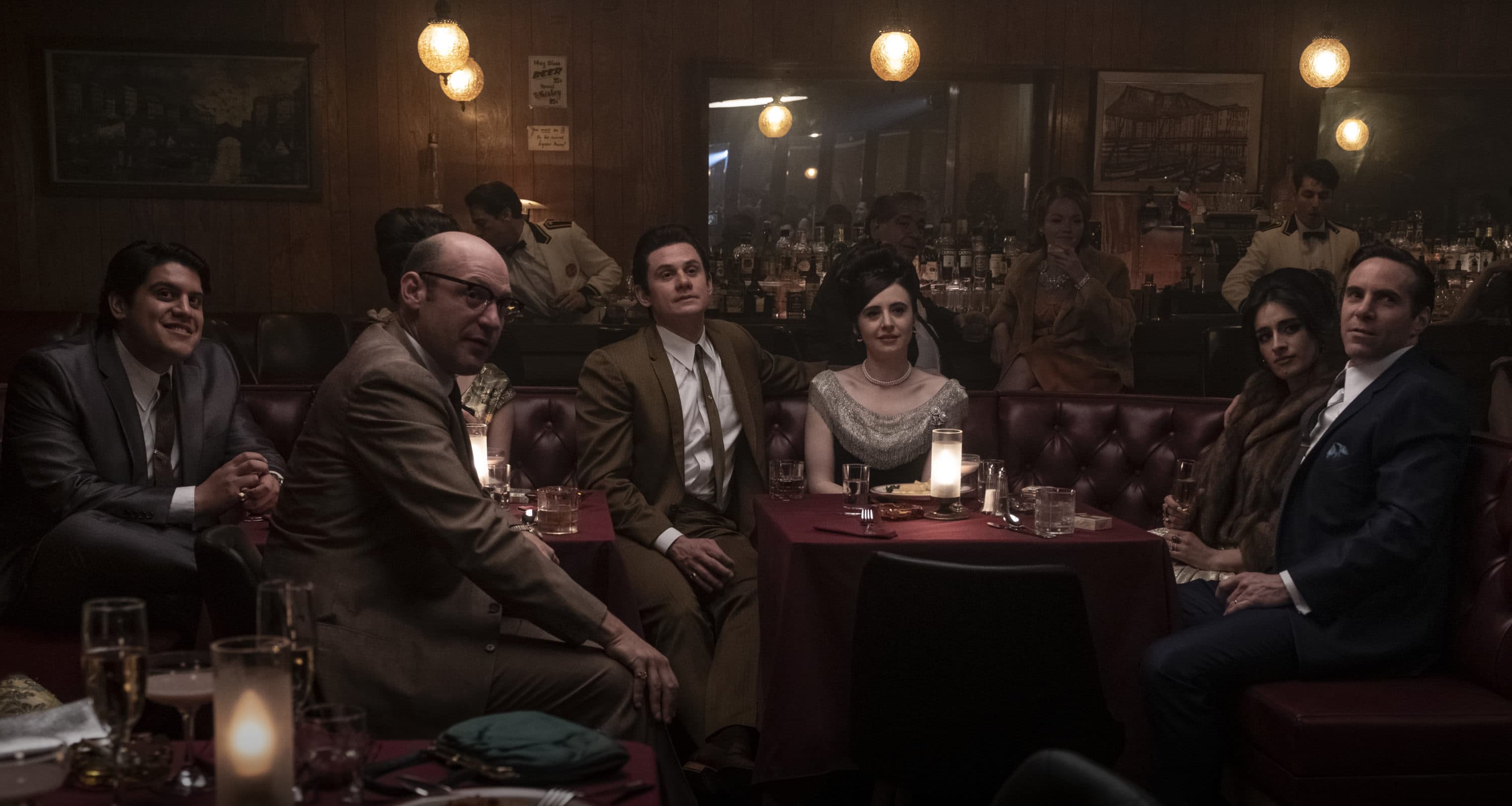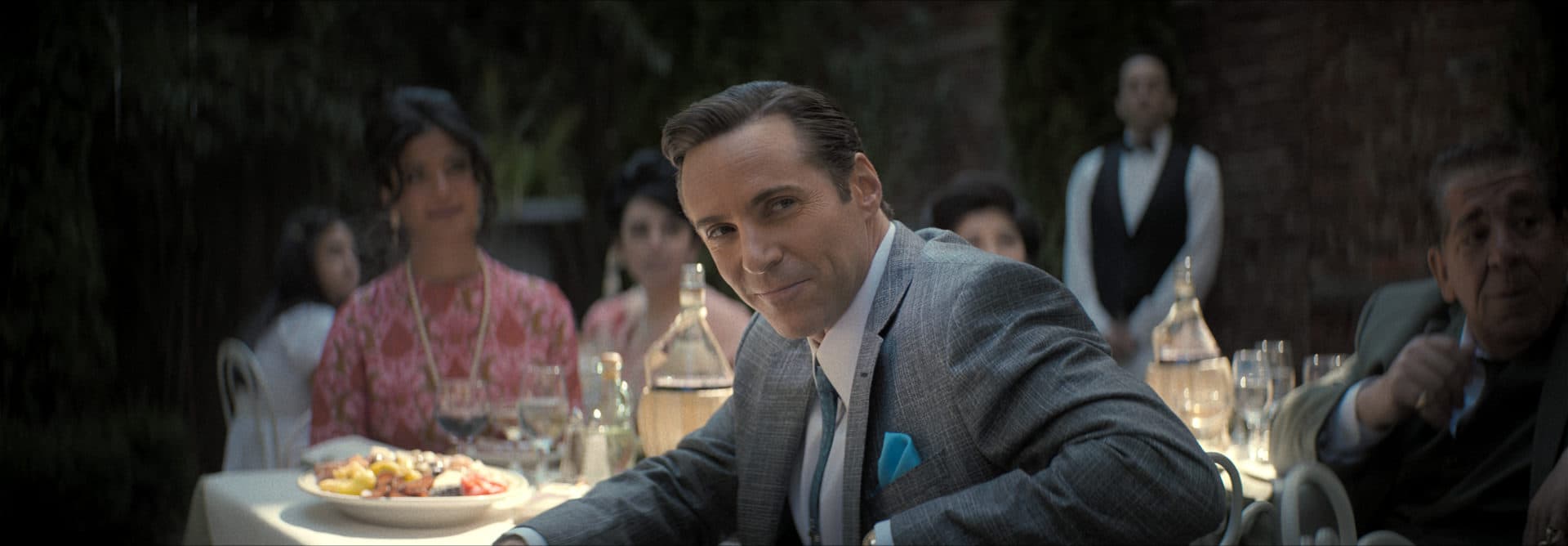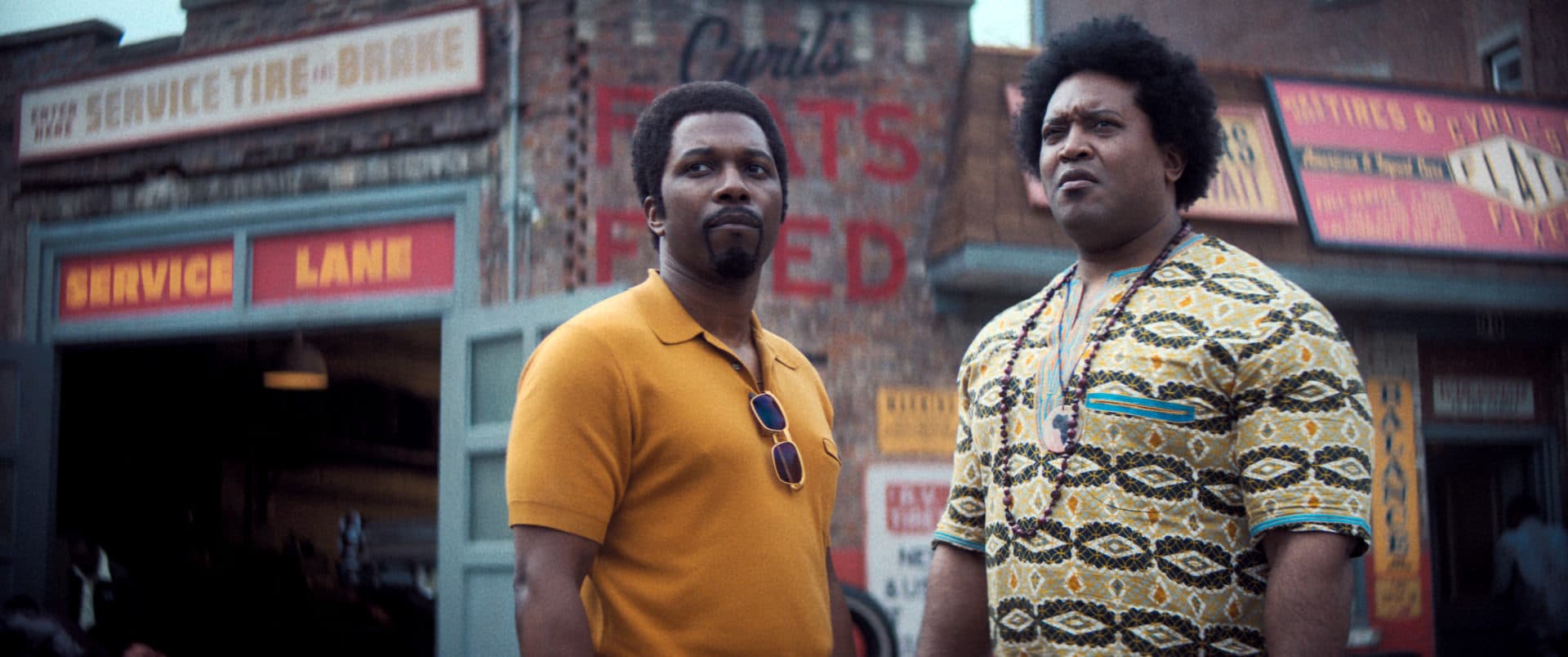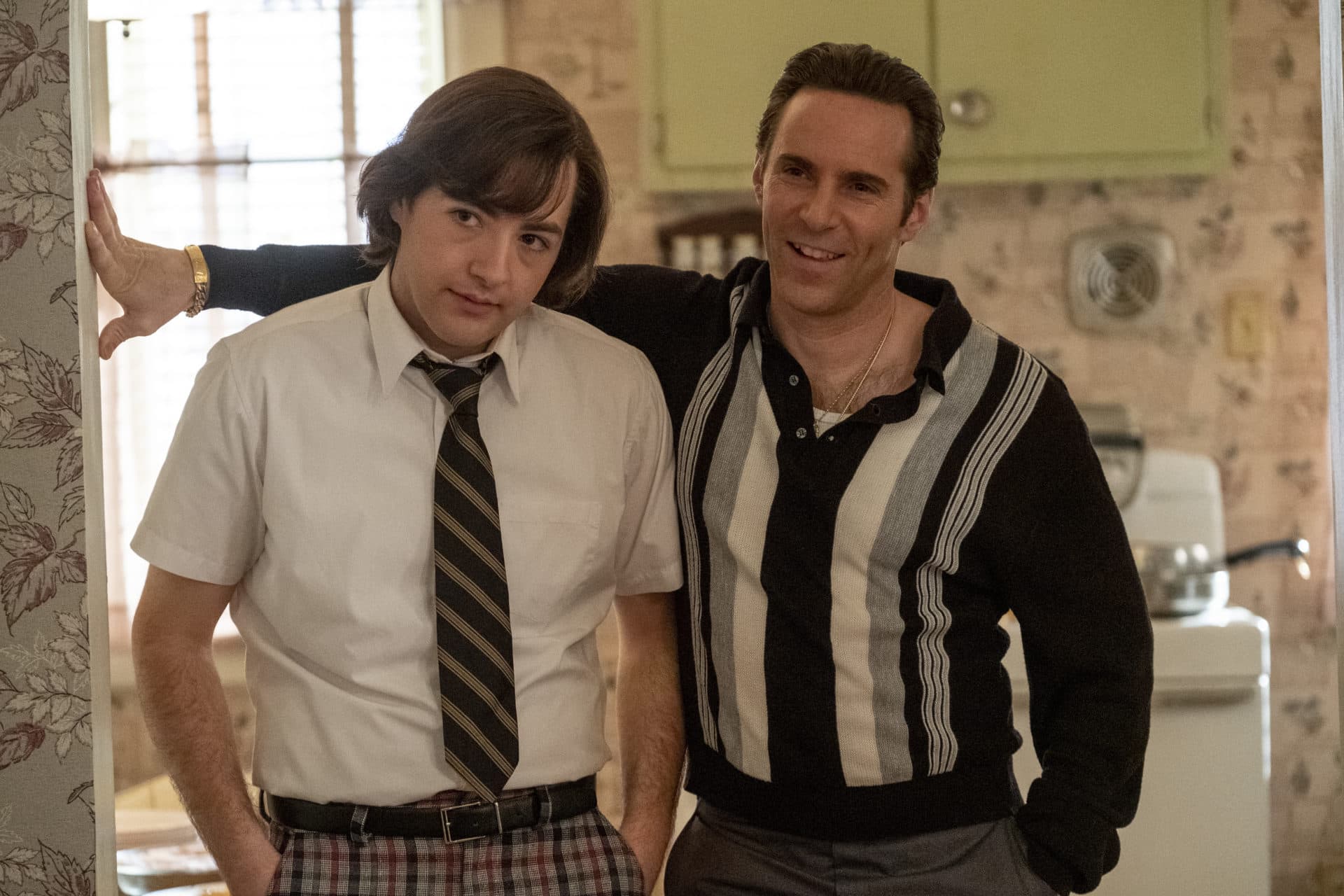Advertisement
Review
'Sopranos' Prequel 'The Many Saints Of Newark' Is An Anti-Nostalgia Nostalgia Trip

“‘Remember when’ is the lowest form of conversation,” groused James Gandolfini’s Tony Soprano during the final season of the show that changed television forever. It’s a funny line on its own but downright hilarious coming from Tony, who — like most characters on “The Sopranos” — was a sentimental bore wallowing in aggrieved reminiscences of a mythical Mafia past, pining for imaginary good old days that almost certainly weren’t very good for anybody. It’s been 14 years since the show’s creator David Chase abruptly cut to black during the finale, plunging viewers into an empty void. To this critic’s mind, “The Sopranos” being so rudely ripped away without warning or explanation was a brilliant conceptualization of Chase’s series-long fixations on precariousness and impermanence: one minute you’re watching it, the next it’s gone. (Other viewers thought their cable went out and called it the worst ending ever. I still get in arguments about this at least once a month.)
But since we live in an age where nothing popular can ever actually end, Chase has somewhat begrudgingly returned to the scene of the crime with “The Many Saints of Newark,” a prequel movie set in the absurdly over-romanticized late-1960s heyday of Tony’s father’s generation. The film focuses on his Uncle Dickie Moltisani, a larger-than-life figure of legend in “Sopranos” lore whose early mentorship of Tony would be mirrored years later in the mob boss’ bungled attempt to make Dickie’s doomed, druggy son Christopher into his apprentice. Never glimpsed in the show’s occasional flashbacks to the era but spoken of with religious reverence, the giant “Gentleman Dick” Moltisanti loomed as an abstract ideal of masculinity to which our modern day misfits could never measure up.

Of course, the punchline here is that, despite being played with Sinatra swagger by the rather ridiculously handsome Alessandro Nivola, we now see that Dickie’s just as angsty, neurotic and screwed-up as his nephew would turn out to be 30 years later. An anti-nostalgia nostalgia trip, “The Many Saints of Newark” is, like the television show before it, about a man slouching slowly toward self-awareness and never quite getting there. Misleadingly marketed as “Young Sheldon: The Ziti Years,” it’s instead a knotty character study about insular tribes, empty gestures and performative macho rituals full of sound and fury, signifying nothing. No storyteller delights in the subversive anticlimax quite like David Chase, and I worry that this excellent film will be judged against audience expectations it has no interest in fulfilling. (Michael Gandolfini’s teenage Tony, front and center in the promotional campaign, does not appear until the movie’s second hour.)
“The Many Saints of Newark” works as a prequel in the way David Lynch’s “Twin Peaks: Fire Walk With Me” worked as a prequel: introducing more questions than it answers and doubling back on familiar terrain to riff on themes that fascinate the filmmakers far more than conventional resolutions. (Anyone who comes to this movie looking for closure will probably rip their hair out. But then that’s been a “Sopranos” trademark going back to the Russian in the woods.) Despite the Rat Pack fashions and cool cars the size of submarines, the gangster life has never seemed so squalid and small, nothing but petty in-fighting and penny-ante grifts. It is behind Dickie’s twinkling, haunted eyes we see the slow-dawning awareness of a larger world, one that’s changing fast.
The central, most telling image is when Moltisanti has to physically drag his motley crew of mooks outside to see the city of Newark in flames, as the 1967 riots just exploded while everyone was obliviously shoveling spaghetti into their mouths. Most people in this film are only capable of seeing six inches in front of their face. Dickie can see about eight. Maybe nine. And it nags at him. He’s got a flinty feud brewing with a Black former employee (Leslie Odom Jr.) and is only gradually getting the idea that he might not be the best influence on his young nephew, Anthony (played as a little kid by William Ludwig, then later, heartbreakingly, by James Gandolfini’s son Michael). Worst of all, Dickie’s blustery, browbeating old man — Ray Liotta at his most gloriously grotesque — has just come back from Italy with a knockout new bride half his age (Michela De Rossi) and Dickie can’t take his eyes off her. Forget Dr. Melfi, we need Freud for this one.

The familiar characters are kept to the sidelines here, with Jon Bernthal making an impression as the bellicose Johnny Boy Soprano, so much louder and stupider than the man of adult Tony’s memories. Vera Farmiga does such a spot-on job mimicking Nancy Marchand’s poisonous drone it’s easy to look past the unfortunate prosthetic beak with which she’s been fitted. (She ends up looking more like Edie Falco, which given all this family’s Oedipal trauma makes a strange sort of sense, I guess.) Corey Stoll is a scream as the stentorian Uncle Junior, and while I was surprised the movie skipped an obvious opportunity to reference the character’s controversial penchant for cunnilingus, it’s a relief that such cutesy callbacks are for the most part kept to a minimum. Whenever the catch-phrases come out there’s something obligatory about them, as opposed to the audacious way Chase and company have come up with for Dickie to approximate the original series’ therapy scenes.
Alessandro Nivola has been a movie star waiting to happen ever since he stole the show as Frances McDormand’s rock ‘n’ roll boy toy in 2002’s “Laurel Canyon.” He cuts an enormously empathetic figure here even in Dickie’s most monstrous moments, playing a flashy, funny guy who knows better but can’t help giving into his worst urges. It’s a little scary how much the young Gandolfini resembles his deceased dad, the teenage Tony already depressed and desperate to emulate his cool uncle. The film is fixated on toxic role models and unconvincing role playing — most hilariously when two 10-year-old boys are backed by a soundtrack out of a Scorsese movie, strutting off the school bus like a couple of gangsters and cursing every other word.

Chase, who penned the screenplay with Lawrence Konner, has never had much interest in plot progression and is often content to let story elements simmer in the background while he’s focusing on the peculiarities of human behavior. Nobody writes dumbbell dialogue better, savoring moronic malapropisms and miscommunications. (There were a few times I laughed so hard I thought I was going to injure myself.) He loves to hang in there with a scene two or three beats too long or cut out a little early just to keep the audience off guard. I can’t tell you how many times during “The Sopranos” I’d wonder why the heck he’d included some random non sequitur only to find I couldn’t stop thinking about it a few days later. “The Many Saints of Newark” has a few of those, if not as many as I’d hoped.
The film was directed by Alan Taylor, a veteran of the series who took over the reins when Chase was sidelined by a family health crisis. It’s a well-mounted movie that nonetheless lacks that eerie stillness of “The Sopranos,” at times in too much of a hurry, leaning on the wall-to-wall classic rock soundtrack as if afraid to sit in silence. (Since the show, Taylor went on to helm horrid Hollywood blockbusters like “Terminator Genisys” and “Thor: The Dark World,” so we should probably be amazed that “Many Saints” is as good as it is.) I’m also not crazy about the decision to shoot on desaturated digital video with low-contrast backlighting, an aesthetic that screams 2021 and is no match for the original show’s richly textured 35mm shadowplay.
But there I go, comparing the best movie I’ve seen in months to the best television show ever made. I suppose it’s fitting for a movie about people being crushed under colossal expectations and exaggerated family histories. Chase is pretty sly about showing us scenes we only heard about during the show, like Johnny Boy blowing a hole in Livia’s beehive hairdo or Uncle Junior saying Tony never had the makings of a varsity athlete. But they never happen quite the way we were told during the series, after the legends have taken root. In the show’s final season, Tony lamented passing on to his son “that f---ed up Soprano gene,” but “The Many Saints of Newark” makes it clear that such legacies are as behavioral as they are biological. Whether out of spite, laziness or a misguided sense of duty, Chase’s characters always grow into the roles that were handed down to them. That’s why they’re damned.
“The Many Saints of Newark” is in theaters beginning Oct. 1.
